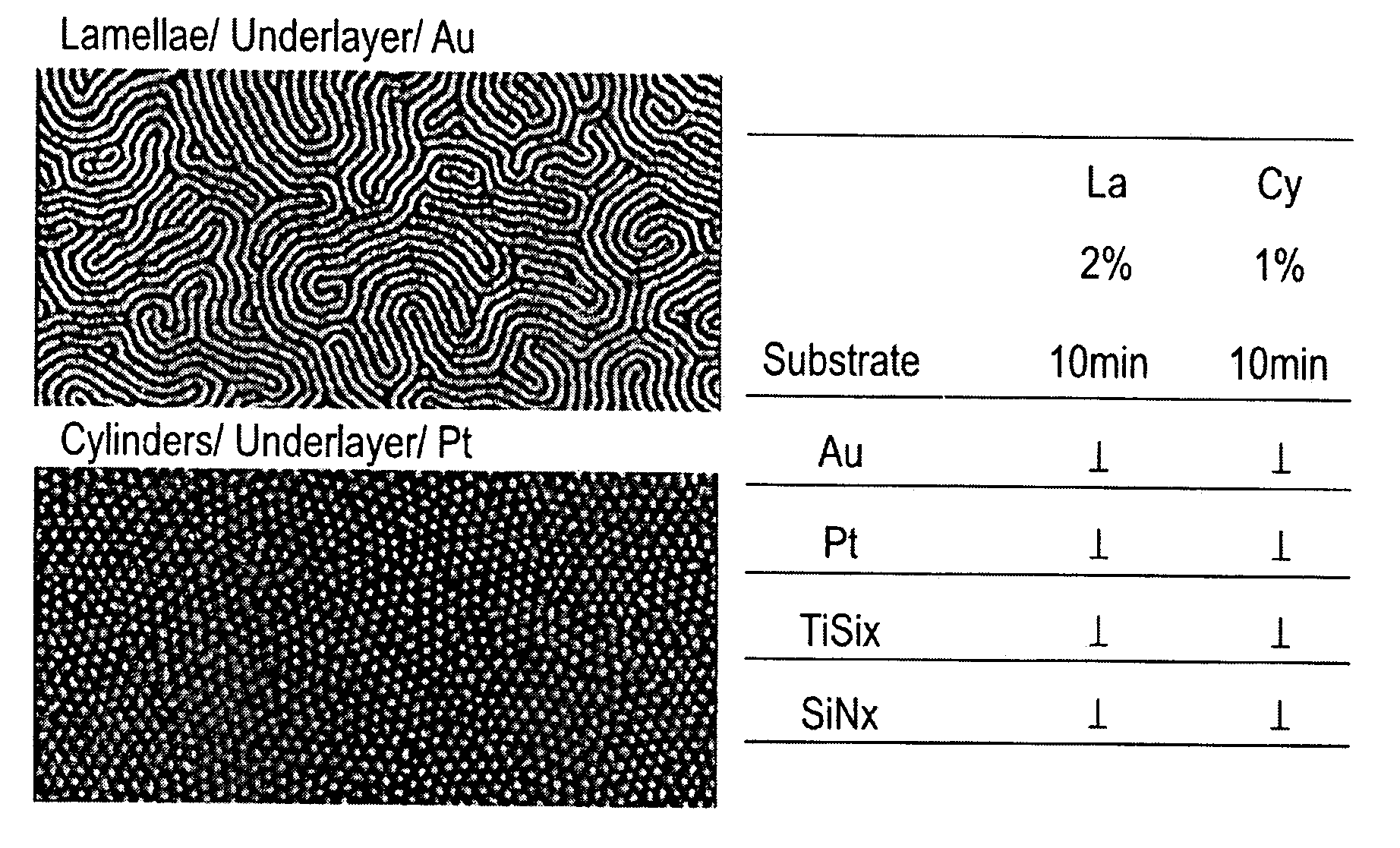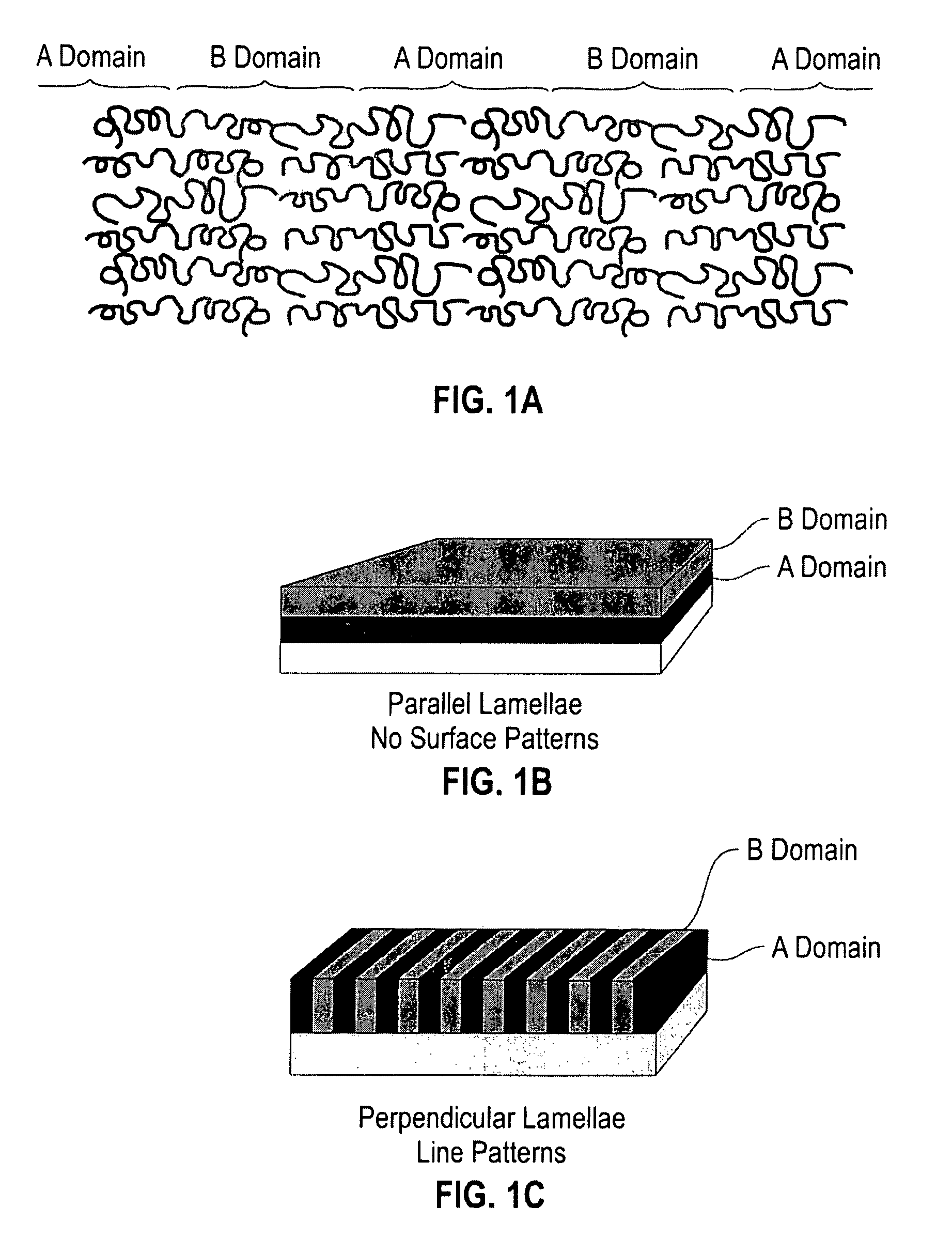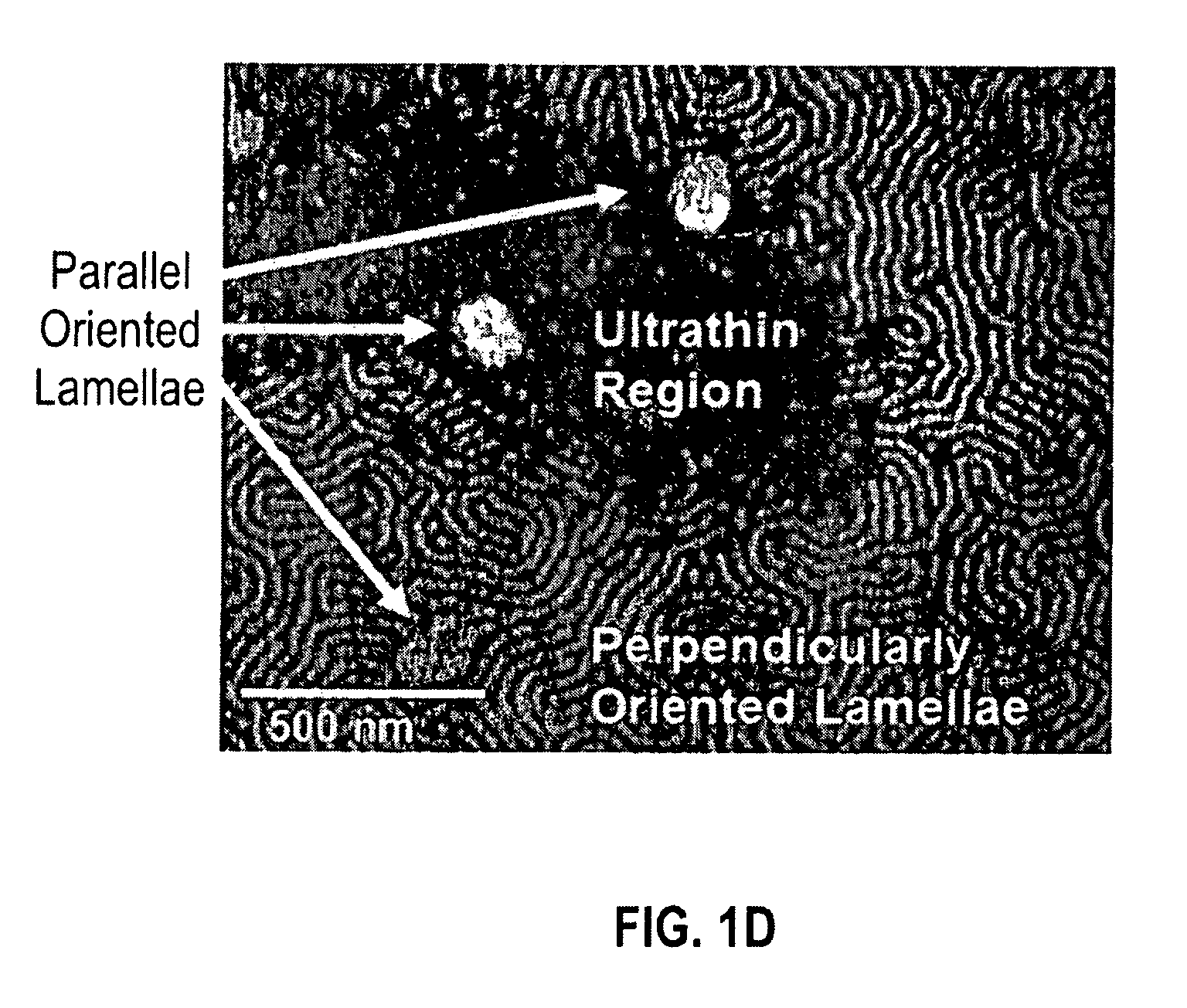Method of use of epoxy-containing cycloaliphatic acrylic polymers as orientation control layers for block copolymer thin films
a technology of cycloaliphatic acrylic polymer and orientation control layer, which is applied in the direction of photosensitive materials, instruments, photomechanical equipment, etc., can solve the problems of difficult to tune the thickness and surface energy of polymer brushes, require reactive precursors, and limit each's utility, so as to reduce processing and cycle time and control the desired feature pattern.
- Summary
- Abstract
- Description
- Claims
- Application Information
AI Technical Summary
Benefits of technology
Problems solved by technology
Method used
Image
Examples
examples
[0074]The following examples are intended to provide those of ordinary skill in the art with a complete disclosure and description of how to prepare and use the compositions disclosed and claimed herein. Efforts have been made to ensure accuracy with respect to measured numbers, but allowance should be made for the possibility of errors and deviations. Unless indicated otherwise, parts are parts by weight, temperature is in ° C. and pressure is at or near atmospheric. Epoxydicyclopentadienyl methacrylate was obtained from Elf-Atochem. Lamellae-forming poly(styrene-b-methyl methacrylate) (18,000 g / mol / 18,000 g / mol block sizes, respectively) was obtained from Polymer Source. Cylinder-forming poly(styrene-h-methyl methacrylate) (17,000 g / mol / 38,000 g / mol block sizes, respectively) was prepared by copolymerizing styrene and methyl methacrylate by a known procedure using the method of reversible addition-fragmentation chain transfer (RAFT) polymerization. PMMA precursors with phenyl dith...
PUM
| Property | Measurement | Unit |
|---|---|---|
| Temperature | aaaaa | aaaaa |
| Temperature | aaaaa | aaaaa |
| Temperature | aaaaa | aaaaa |
Abstract
Description
Claims
Application Information
 Login to View More
Login to View More - R&D
- Intellectual Property
- Life Sciences
- Materials
- Tech Scout
- Unparalleled Data Quality
- Higher Quality Content
- 60% Fewer Hallucinations
Browse by: Latest US Patents, China's latest patents, Technical Efficacy Thesaurus, Application Domain, Technology Topic, Popular Technical Reports.
© 2025 PatSnap. All rights reserved.Legal|Privacy policy|Modern Slavery Act Transparency Statement|Sitemap|About US| Contact US: help@patsnap.com



